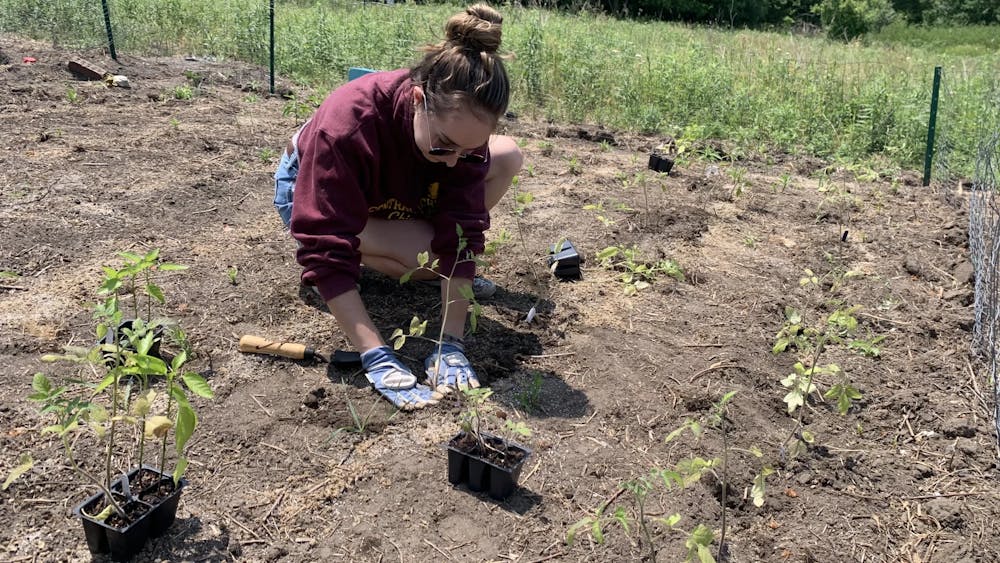Isabella County farmers uncertain about future after $28 million flooding loss
Estimated damage may be closer to $40 million as more information comes in from across the county
The flooding caused by thunderstorms on June 23 represents the most costly agricultural incident in Isabella County's history, according to estimates that put the cost of damage at more than $28 million.
An initial estimate released by the Isabella County Emergency Operations Center placed the cost of damages around $21 million, though further assessments have revealed additional damage, said Jerry Neyer, who owns a dairy farm in Union Charter Township. Neyer believes that costs may be closer to $40 million by the time crops are harvested in the fall, when farmers will have a better idea of how their crops have been affected.
It may take months to get an accurate estimate of damages to crops, said Abe Pasch, president of the Isabella County Farm Bureau.
"It's all to early to tell," Pasch said. "We won't be able to measure anything until we harvest the crops, which isn't until November in some cases. It's kind of like watching a basketball game where you don't get to see the scoreboard until the game is over."
The $21 million estimate included countywide losses of $12.8 million to soybean crops, $5 million to corn, $1.3 million to wheat and $1.5 million to dry beans, with the rest of the damage being done to smaller specialty crops, including sugar beets and vegetables.
The estimates were put together by a group of local agricultural officials working with the Emergency Operations Center to complete preliminary damage assessments, including Paul Gross, an educator for the Michigan State University Extension in Mount Pleasant.
"What makes this (flood) unique is that it's so early in the growing season, so we really don't know yet how much damage is actually going to happen," Gross said. "Making that assessment is difficult because the waters have receded now, and we're starting to look at the damage. Some of it's worse than we thought, some of it's not as bad as we thought."
"We don't know what the rest of the growing season is going to look like, so there are a lot of variables that we need to look at as we go forward."
Working with his colleagues at the MSU Extension, Gross has helped put together a series of educational articles aimed at educating farmers about ways they can tend to crops that have been affected by the floods.

Soybeans and dry bean crops were severely affected by the floods because the short height of the plants made them more vulnerable to flood damage. Soybeans are also more vulnerable to mold and diseases caused by excess moisture, including the "root rot" fungus Phytophthora.
Corn and wheat crops fared better than soybeans due to the plants being taller, but both crops still received damage. Wheat is less likely to be washed away by flooding because of its stronger root structure.
Isabella County experienced similar levels of flooding in 1986, though that flooding did not have as severe of an effect on crops as the June 23 for a variety of reasons, said Gross. The 1986 flooding occurred in September, when many of the crops were mature, or nearly ready to be harvested, the main problem posed by the flood was that it prevented crops from being harvested.
The flooding of June 23 happened around the time of year when crops are first being planted, or have only been planted recently. Many farmers who have had crops damaged or destroyed by flood waters will not have time to replant in time for growing season, said Gross.
Isabella County is home to more than 850 farmers, all of whom were affected by the flooding, said Gross. Isabella County produces more than $119 million in yearly gross sales for crop production. Gross believes that the flooding will cause a decrease in annual agriculture revenue, also citing a nationwide decrease in commodity prices caused by a surplus of crop production in other parts of the country. As more product is put on the market, individual prices go down, meaning farmers will earn less for the product that they sell.
"What hurts us double is that not only do we not have bushels to sell now, because of the flood, but the bushels that we have to sell will be worth less than in the past," Gross said. "I think that our farmers are really going to be challenged by (the flooding)."



